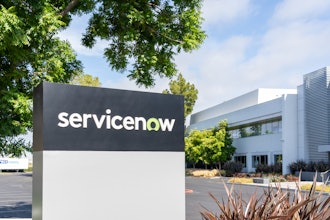Whether you realize it or not, you are a technology company. You sit at the intersection of products and technology driven by a world craving more IoT innovations, requiring a digital transformation within your organization. Understanding the dependencies between customer needs, projects, products, services and applications is critical to aligning your strategy with execution… and beating the competition to market.
If you haven’t felt it yet, you’ll soon notice a requirement for more complex products that deliver on the promise of a connected world. The challenge is matching that increased demand with resources and budgets that aren’t growing at the same pace.
Organizations that are edging past their competitors are using solutions for strategic planning, portfolio and resource management, product innovation, capability and technology management, and collaborative work management to radically change how they manage their work and people.
These companies are seeing measurable results, including:
- project completion rates boosted by 50 percent
- reduced time to market by an average of 30 percent
- millions of dollars saved by eliminating duplicate and lower value projects (including the zombie projects)
- improved pipeline visibility by reducing the time it takes to make results available by nearly 85 percent
To achieve similar results in your organization, here are three industry best practices from leading manufacturing companies.
Prioritize Projects and Products That Deliver Against Strategy
Product pipelines get clogged. A structured, objective process for prioritizing the most valuable research and development projects within a central source of truth will eliminate the “whoever shouts the loudest” phenomenon, ensuring resources and money are applied to the projects that will deliver ROI outlined in the strategic plan. Focus on the initiatives that will delight your customers and in turn, help the company achieve its goals.
A global automotive manufacturer needed better visibility after acquiring and consolidating several brands. The challenge for the new, combined company was improving cost efficiencies while consolidating brands across the new, combined entity. They applied work and resource management techniques to prioritize their projects based on budgets and alignment to the corporate strategy. They also analyzed the profitability of those projects based on various budget scenarios. As a result, the company began managing its portfolios better by improving the quality and accuracy of their data to make more informed business decisions.
Another global building materials manufacturing company re-evaluated its processes and resource alignment after 10 years of consistent growth through acquisitions and global expansion. The company was known for its product quality but began struggling to control resources and costs while developing new products.
Some product development areas were experiencing bottlenecks while other others were under-utilizing resources, which overall were being pulled in too many directions on a global scale. The company's product innovation began to stall, and competitors began closing in.
The company formed a new innovation management team and implemented a project portfolio management solution to evaluate all projects for risks, costs, conflicts, and resource issues. With that insight, they were able to cancel underperforming and high-risk projects before they drained more resources, enabling the company to develop products significantly faster and with lower costs. Information that once took 12 hours to gather was soon a few clicks away. Better visibility improved communication and fewer redundancies.
Conduct Continuous Capacity Planning to Ensure Resources are Available When Needed
As companies expand, resources are often outnumbered by projects, causing product delays and ultimately missed revenue targets.
One global industrial manufacturer needed to address project throughput issues and severe penalties due to products being delivered late to customers. Multiple company divisions were operating autonomously and sometimes borrowing resources from other groups. While their business was strong, the company lacked visibility into their overall product pipeline and which resources were working on which projects.
The company began prioritizing product development in alignment with the company's overall strategy and revenue goals and in context of their resource capacity. The company decided to accept fewer products into the pipeline with a commitment to consistently meet deadlines and budgets. As a surprising result, the organization was able to produce more products in four months than it usually did in a year. Having an overall view of both work and resources meant this company saw a bigger return.
Gain Visibility to Both Structured and Unstructured Work
Throughout the work year, organizations balance two types of work: structured and unstructured. Structured work involves formal projects driven by milestones, dates, and strategic initiatives. It’s typically tied to methodologies like Stage-Gate that drive how work is planned and executed for a predictable outcome. Unstructured work, however, involves day-to-day tasks such as employee onboarding, new vendor contracts, supply chain issues, and additional, smaller activities.
Unstructured work is important. It’s the stuff we need to get done to run our day-to-day business. It can co-op critical resources and divert resources from projects that move the needle on revenue and corporate goals. Unstructured work can’t be avoided, but, like the unseen portion of an iceberg, it can sink productivity and progress if left unmanaged. To make sense of both, collaborative work management (CWM) can help organizations better manage the different types of work to execute against strategy.
For example, a global pharmaceutical company used CWM to improve the efficiency of its retail “end cap” displays to launch new products by collaborating internally with marketing, product management, and supply chain, as well as externally with retailers and suppliers.
A large graphics company expanded its use of CWM from IT to product engineering to improve how they completed projects together. The enhanced collaboration ultimately made roadmaps and supporting documentation more accessible and improved the efficiency of product launches, ultimately delivering against strategic objectives.
The year ahead offers vast amounts of potential for manufacturers that are ready to take on the challenges. Understanding, prioritizing, and managing work and resources across the organization will help you line up the capabilities and outcomes to achieve strategic objectives and goals… and put you on the path to beating your competition to market… and to the next innovation.
Patrick Tickle is chief product officer at Planview.























